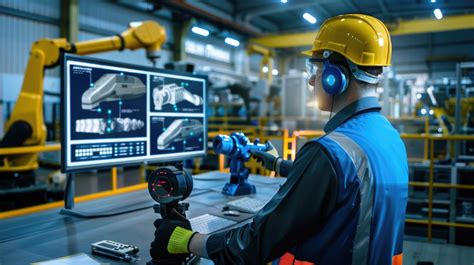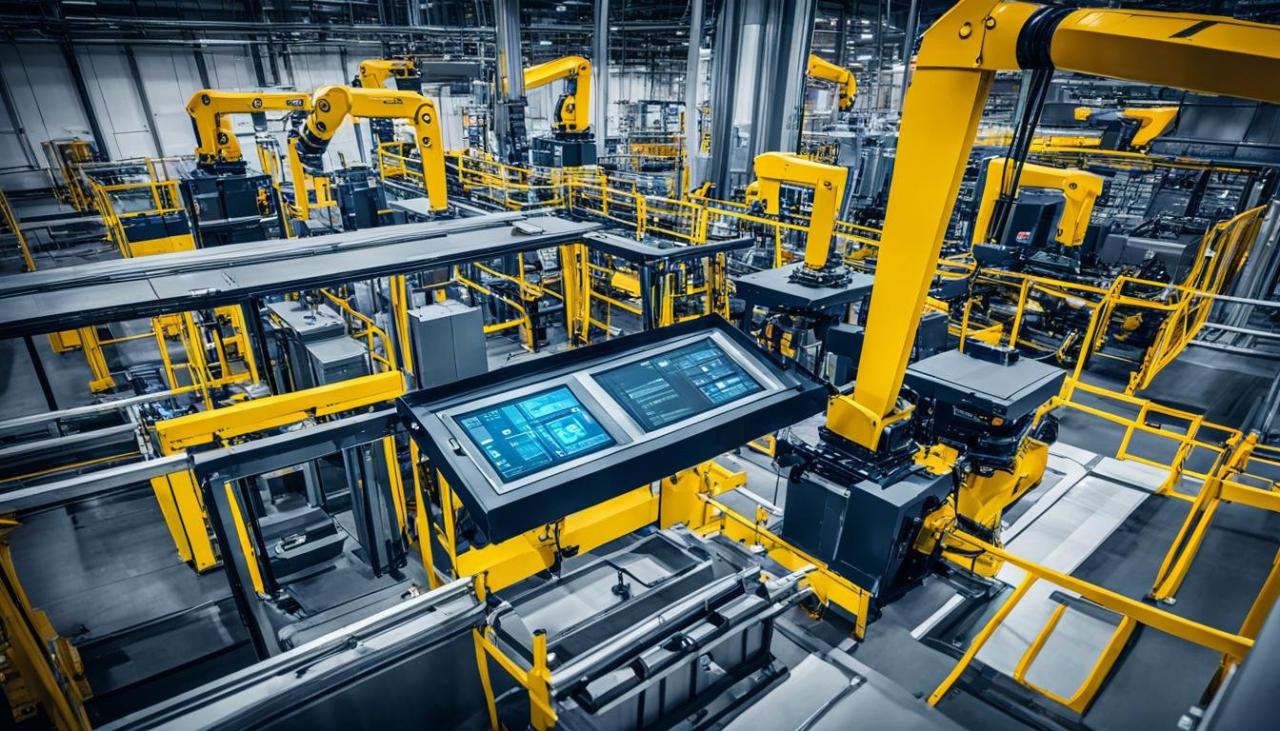In today’s fast‑paced industrial landscape, unplanned equipment failures can grind production to a halt, inflate operational costs, and tarnish a company’s reputation. Traditional preventive maintenance based on fixed schedules or reactive repairs often falls short of maximizing asset uptime and minimizing expenses. Enter AI predictive maintenance: a data‑driven approach that harnesses artificial intelligence (AI), machine learning, and the Internet of Things (IoT) to anticipate equipment failures before they occur. By analyzing real‑time sensor data and historical repair logs, AI predictive maintenance platforms deliver actionable insights that enable organizations to transition from time‑based upkeep to condition‑based interventions. This article explores the origins, technologies, benefits, implementation strategies, real‑world applications, challenges, and future trends of AI predictive maintenance, offering a comprehensive guide for businesses seeking to transform their maintenance programs.
A. Evolution of Maintenance Strategies
Maintenance methodologies have evolved significantly over the past century:
A. Reactive Maintenance: Also known as “run‑to‑failure,” this approach repairs equipment only after breakdown, leading to unpredictable downtime and high emergency costs.
B. Preventive Maintenance: Scheduled interventions such as lubrication, part replacement, and inspections reduce some failures but risk over or under‑maintenance due to fixed intervals.
C. Condition‑Based Maintenance (CBM): Uses periodic inspections and basic sensor readings (like vibration or temperature) to decide when to service assets, improving efficiency over fixed schedules.
D. Predictive Maintenance: Employs advanced analytics and continuous monitoring to forecast failures days or weeks in advance, optimizing maintenance timing and resource allocation.
E. Prescriptive Maintenance: The next frontier, combining predictive insights with AI‑driven recommendations on optimal maintenance actions and parts procurement.
B. How AI Predictive Maintenance Works
At its core, AI predictive maintenance relies on a continuous data‑analysis cycle:
A. Data Collection: IoT sensors capture metrics such as vibration, temperature, pressure, current draw, and acoustic signatures from machines in real time.
B. Data Integration: Collected data streams feed into central platforms often cloud‑based where they merge with historical maintenance logs, inventory records, and operational parameters.
C. Feature Extraction: Machine learning engineers identify relevant features (e.g., vibration frequency bands, temperature gradients) that correlate with equipment health.
D. Model Training: Supervised, unsupervised, or semi‑supervised AI models learn normal operating patterns and detect anomalies signaling impending faults.
E. Prediction & Alerting: Once trained, the AI system forecasts time‑to‑failure metrics and triggers alerts via dashboards, mobile apps, or email to maintenance teams.
F. Continuous Learning: Feedback loops incorporate actual repair outcomes, refining model accuracy and adapting to evolving equipment behaviors.
C. Key Technologies and Components
Successful AI predictive maintenance deployments combine multiple technological layers:
A. IoT Sensors & Edge Devices: Robust, industrial‑grade sensors measure key health indicators, while edge gateways preprocess data to reduce latency and bandwidth use.
B. Connectivity Protocols: MQTT, OPC UA, and AMQP ensure reliable, secure data transmission from shop floor to cloud or on‑premises servers.
C. Cloud & Edge Computing: Scalable cloud platforms host heavy analytics workloads, while edge nodes handle real‑time inference for critical latency‑sensitive use cases.
D. Big Data Platforms: Distributed storage solutions (e.g., Hadoop, Apache Spark) manage petabytes of time‑series data and support batch or stream processing.
E. Machine Learning Frameworks: TensorFlow, PyTorch, and scikit‑learn provide libraries for building and deploying predictive models customized to asset types.
F. Visualization & Dashboards: User interfaces built in Power BI, Tableau, or custom web apps present actionable insights, health scores, and recommended actions.
G. Integration APIs: RESTful or SOAP APIs connect predictive maintenance outputs with ERP, CMMS, and asset‑management systems for end‑to‑end workflow automation.
D. Business Benefits of AI Predictive Maintenance

Organizations across industries realize significant ROI by implementing AI‑driven maintenance:
A. Reduced Downtime: Proactive interventions prevent unplanned stoppages, boosting equipment availability by up to 20 percent.
B. Lower Maintenance Costs: Targeted servicing eliminates unnecessary part replacements and labor, cutting maintenance expenses by 10–30 percent.
C. Extended Asset Lifespan: Detecting early wear patterns helps maintain equipment within optimal operating windows, prolonging useful life.
D. Improved Safety: Preventing catastrophic failures reduces workplace hazards and compliance violations.
E. Optimized Spare Parts Inventory: Accurate failure forecasts enable just‑in‑time parts procurement, slashing inventory carrying costs.
F. Enhanced Productivity: Maintenance teams shift from reactive firefighting to strategic planning, increasing operational efficiency.
G. Data‑Driven Decision‑Making: High‑fidelity insights empower engineers and managers to prioritize critical assets and investments.
E. Steps for Implementing AI Predictive Maintenance
Deploying an effective predictive program involves structured planning and execution:
A. Asset Selection: Identify high‑value or high‑risk equipment (e.g., turbines, compressors, CNC machines) for initial pilot projects.
B. Sensor Assessment & Installation: Evaluate existing instrumentation, fill gaps with new sensors, and ensure proper calibration and placement.
C. Data Infrastructure Setup: Design data pipelines, choose cloud or on‑premises platforms, and establish secure connectivity protocols.
D. Model Development & Validation: Collaborate with data scientists and maintenance experts to build, train, and validate AI models on historical failure cases.
E. Integration with CMMS/ERP: Automate work order creation, parts ordering, and schedule adjustments based on AI alerts within existing enterprise systems.
F. User Training & Change Management: Educate maintenance personnel on interpreting AI‑generated insights and adapting to new workflows.
G. Pilot Testing & Refinement: Conduct limited trials, gather performance metrics (e.g., true‑positive rate, false alarms), and refine algorithms.
H. Full‑Scale Rollout: Expand coverage across facilities, continuously monitor key performance indicators (KPIs), and iterate on system enhancements.
I. Governance & Compliance: Implement policies for data governance, security, and regulatory adherence, particularly in regulated sectors like pharmaceuticals or aerospace.
J. Continuous Improvement: Establish feedback loops to incorporate field data, adjust maintenance policies, and evolve AI models for new asset classes.
F. Real‑World Use Cases
AI predictive maintenance is revolutionizing operations across sectors:
A. Manufacturing Plants: Automotive OEMs use vibration analytics on stamping presses to predict spindle bearing failures, reducing unplanned downtime by 25 percent.
B. Oil & Gas: Offshore platforms monitor pump and valve health under extreme conditions, averting critical shutdowns and saving millions in lost production.
C. Power Generation: Utilities deploy thermal performance models on gas turbines, optimizing combustion parameters to prevent blade erosion and extending overhaul intervals.
D. Aerospace Maintenance: Airlines integrate flight‑data‑recorder inputs with engine sensor feeds to forecast component wear, enabling on‑ground repairs before dispatch.
E. Railway Systems: Rail operators analyze axle vibration and track temperature data to schedule timely wheel reprofiling, enhancing safety and ride comfort.
F. Facility Management: Large commercial buildings employ AI to flag HVAC compressor inefficiencies, lowering energy consumption and maintenance calls.
G. Challenges and Mitigation Strategies

Despite its promise, AI predictive maintenance faces several hurdles:
A. Data Quality & Quantity: Incomplete or noisy sensor data can undermine model accuracy. Mitigation: Conduct rigorous data cleansing, augment sparse datasets with synthetic data, and establish sensor‑maintenance protocols.
B. Integration Complexity: Connecting disparate systems (IoT platforms, CMMS, ERP) often triggers compatibility issues. Mitigation: Adopt standardized APIs, employ middleware solutions, and engage cross‑functional IT teams.
C. Change Resistance: Maintenance teams may distrust AI recommendations or fear job displacement. Mitigation: Emphasize augmentation, not replacement; involve technicians in pilot phases; provide training and clear communication.
D. Model Explainability: Black‑box AI models can hinder acceptance if outputs lack clear rationales. Mitigation: Use explainable AI techniques (SHAP, LIME) to surface influencing factors behind predictions.
E. Scalability Concerns: Expanding from pilot to enterprise scale demands robust infrastructure and governance. Mitigation: Leverage cloud‑native architectures, implement modular designs, and establish centralized oversight.
H. Measuring Success and KPIs
To quantify the impact of predictive maintenance, organizations track key metrics:
A. Reduction in Unplanned Downtime: Percentage decrease in equipment stoppages outside planned maintenance windows.
B. Maintenance Cost Savings: Year‑over‑year comparisons of part, labor, and emergency repair expenses.
C. Mean Time Between Failures (MTBF): Extension of average operational intervals between equipment failures.
D. Work Order Accuracy: Ratio of AI‑triggered alerts that lead to genuine maintenance needs versus false positives.
E. Spare Parts Turnover: Decrease in obsolete or overstocked inventory and associated holding costs.
F. Technician Productivity: Increase in preventive tasks completed per technician per month.
G. Return on Investment (ROI): Ratio of net benefits (avoided downtime, cost savings) to total implementation costs over a defined period.
I. Future Trends in AI Predictive Maintenance
Emerging innovations promise to elevate predictive maintenance to prescriptive and autonomous levels:
A. Digital Twins: Real‑time virtual replicas of assets that simulate performance under varying conditions, enabling “what‑if” analyses and prescriptive recommendations.
B. Federated Learning: Collaborative AI training across multiple organizations without sharing raw data, enhancing model robustness while protecting proprietary information.
C. 5G‑Enabled Edge AI: Ultra‑low‑latency networks powering on‑device inference for high‑speed manufacturing lines and remote operations.
D. Augmented Reality (AR) Maintenance: Technicians wear AR headsets that overlay AI insights such as predicted failure zones onto physical equipment for guided repairs.
E. Autonomous Maintenance Drones: Aerial or mobile robots conduct non‑intrusive inspections, capturing thermal, visual, and ultrasound data for AI analysis in hard‑to‑reach areas.
F. Blockchain for Audit Trails: Immutable ledgers record sensor readings, maintenance actions, and AI recommendations to ensure compliance and traceability.
J. Getting Started: Action Plan for Organizations

Organizations ready to embark on their AI predictive maintenance journey can follow this roadmap:
A. Assess Needs & Objectives: Define critical assets, desired outcomes (e.g., 15 percent downtime reduction), and budget constraints.
B. Secure Executive Sponsorship: Obtain buy‑in from C‑level stakeholders by presenting clear business cases and risk assessments.
C. Build Cross‑Functional Teams: Combine expertise from maintenance, IT, data science, and operations to drive cohesive implementations.
D. Select Technology Partners: Evaluate vendors based on industry experience, integration capabilities, model explainability, and support services.
E. Pilot & Scale: Start with a focused proof‑of‑concept on a single asset class, measure results, refine models, then expand across the enterprise.
F. Invest in Change Management: Cultivate a data‑driven culture, reward adoption, and provide ongoing training to cement new workflows.
G. Monitor & Iterate: Continuously review performance metrics, gather user feedback, and evolve AI models to adapt to changing operational conditions.
Conclusion
AI predictive maintenance is reshaping how industries manage asset reliability, optimize costs, and ensure safety. By leveraging IoT sensors, advanced analytics, and machine learning, organizations can transition from reactive or time‑based maintenance to a proactive, data‑driven paradigm that anticipates failures before they disrupt operations. While challenges around data quality, integration, and change management exist, careful planning, cross‑functional collaboration, and continuous improvement will unlock significant value. As AI technologies evolve embracing digital twins, federated learning, and edge computing the future promises increasingly autonomous maintenance systems that not only predict but prescribe and execute optimal upkeep actions. For businesses committed to operational excellence, embracing AI predictive maintenance is no longer optional it’s essential to thrive in the era of smart manufacturing and Industry 4.0.











